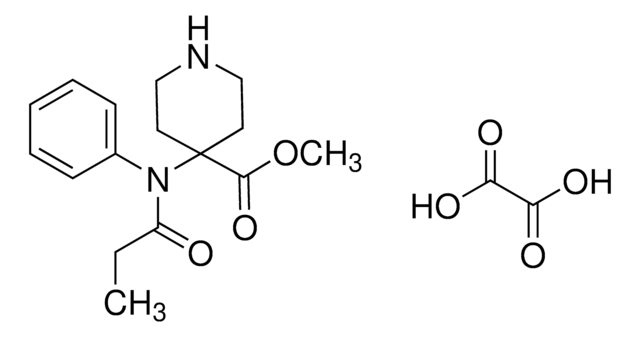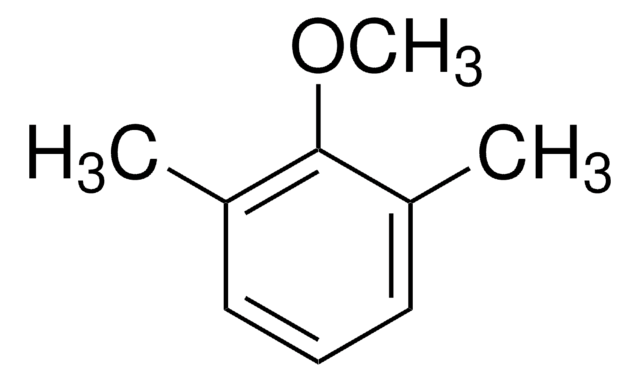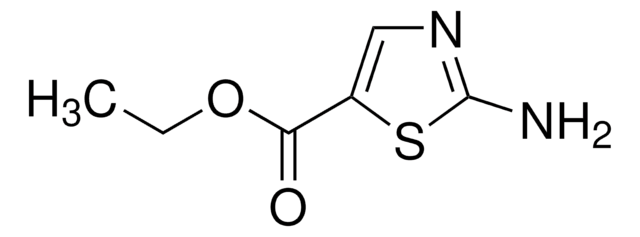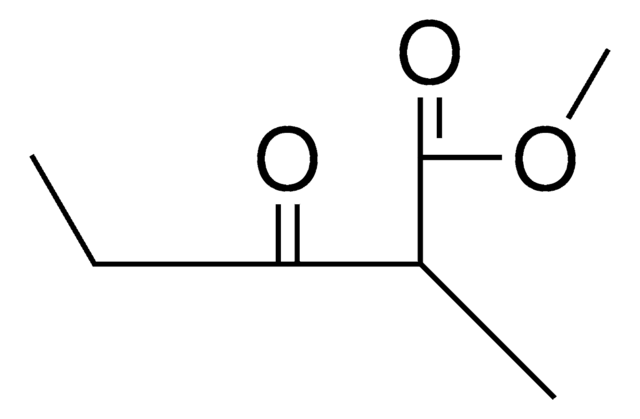137480
2,5-Dimethylanisole
99%
Se connecterpour consulter vos tarifs contractuels et ceux de votre entreprise/organisme
About This Item
Formule linéaire :
(CH3)2C6H3OCH3
Numéro CAS:
Poids moléculaire :
136.19
Numéro CE :
Numéro MDL:
Code UNSPSC :
12352100
ID de substance PubChem :
Nomenclature NACRES :
NA.22
Produits recommandés
Niveau de qualité
Essai
99%
Forme
liquid
Indice de réfraction
n20/D 1.514 (lit.)
pb
190 °C (lit.)
Densité
0.965 g/mL at 25 °C (lit.)
Chaîne SMILES
COc1cc(C)ccc1C
InChI
1S/C9H12O/c1-7-4-5-8(2)9(6-7)10-3/h4-6H,1-3H3
Clé InChI
SJZAUIVYZWPNAS-UHFFFAOYSA-N
Catégories apparentées
Description générale
2,5-Dimethylanisole acts as photoexcited donor and undergoes different non-radiative transitions in the presence of the acceptor 2-nitrofluorene in ethanol rigid glassy matrix at 77K.
Application
2,5-Dimethylanisole was used to investigate the temperature dependence of spin-rotational relaxation rate of methyl C-13 in 2, 5-dimethylaniline.
Code de la classe de stockage
10 - Combustible liquids
Classe de danger pour l'eau (WGK)
WGK 3
Faites votre choix parmi les versions les plus récentes :
Déjà en possession de ce produit ?
Retrouvez la documentation relative aux produits que vous avez récemment achetés dans la Bibliothèque de documents.
C13 NMR Relaxation study of Internal Rotation of Methyl Groups-Spin-Rotational Relaxation of Methyl Carbon-13 in 2-bromo-p-xylene, 2, 5-dimethylanisole and 2, 5-dimethylaniline.
Lee JW, et al.
Bull. Korean Chem. Soc., 8(2), 73-79 (1987)
Investigations on the nature of non-radiative transitions from excited singlet and triplet states of dimethyl substituted phenols in the presence of acceptor 2-nitrofluorene at 77K.
Sinha S and Ganguly T.
Journal of Photochemistry and Photobiology A: Chemistry, 117(2), 83-90 (1998)
Ya-Nan Zhang et al.
Journal of hazardous materials, 358, 216-221 (2018-07-11)
Pharmaceuticals are a group of ubiquitous emerging pollutants, many of which have been shown to undergo efficient photolysis in the environment. Photochemically produced reactive intermediates (PPRIs) sensitized by the pharmaceuticals in sunlit natural waters may induce photodegradation of coexisting compounds.
Manabu Nakazono et al.
Clinica chimica acta; international journal of clinical chemistry, 436, 27-34 (2014-05-13)
Various styrylbenzene compounds were synthesized and evaluated as mainly Aβ amyloid sensors. These compounds, however, cannot be used for detecting amyloid deposition in peripheral nerves because of the inherent sensitivity of the compounds. These compounds often generate false positives especially
Notre équipe de scientifiques dispose d'une expérience dans tous les secteurs de la recherche, notamment en sciences de la vie, science des matériaux, synthèse chimique, chromatographie, analyse et dans de nombreux autres domaines..
Contacter notre Service technique








